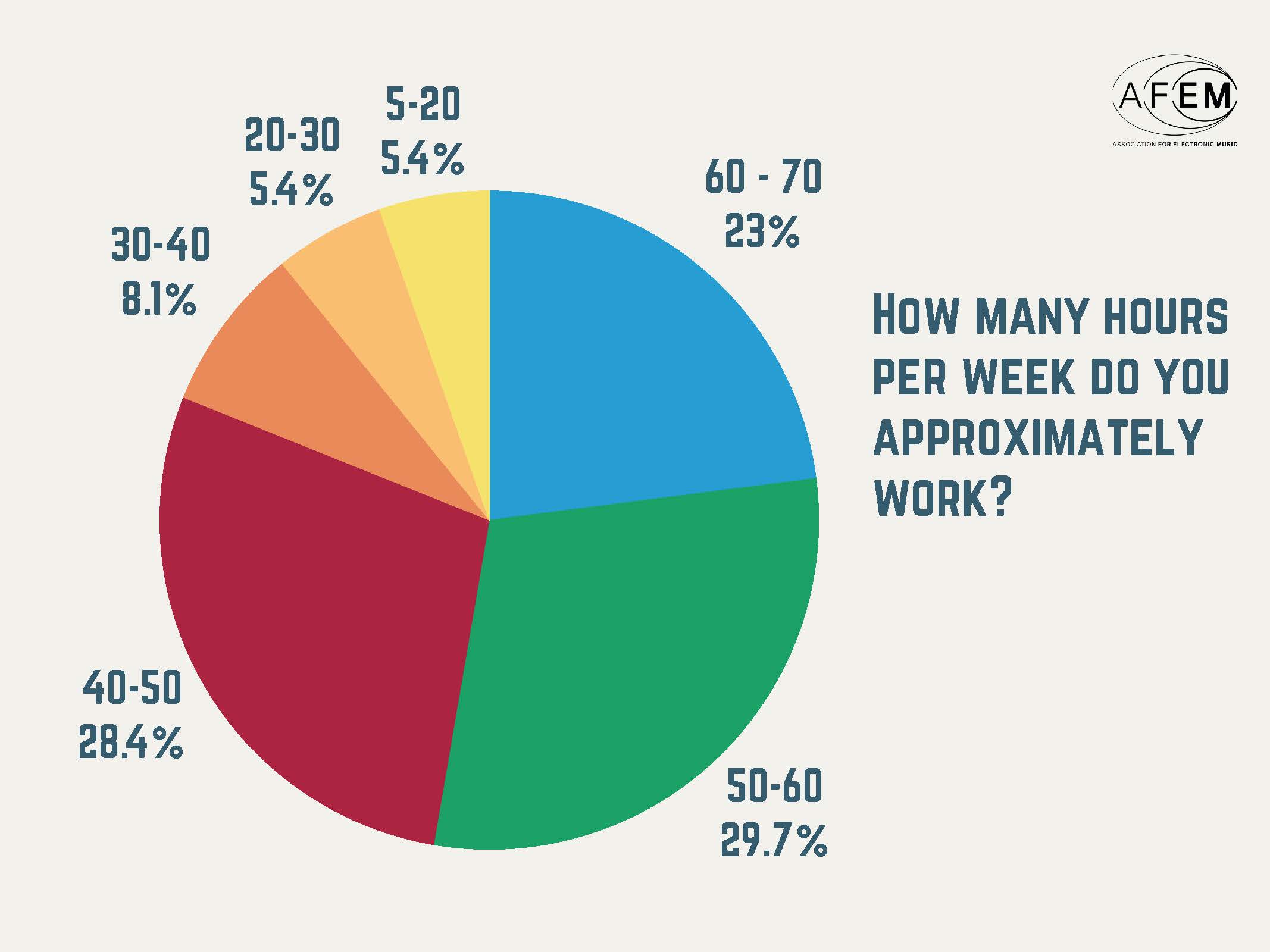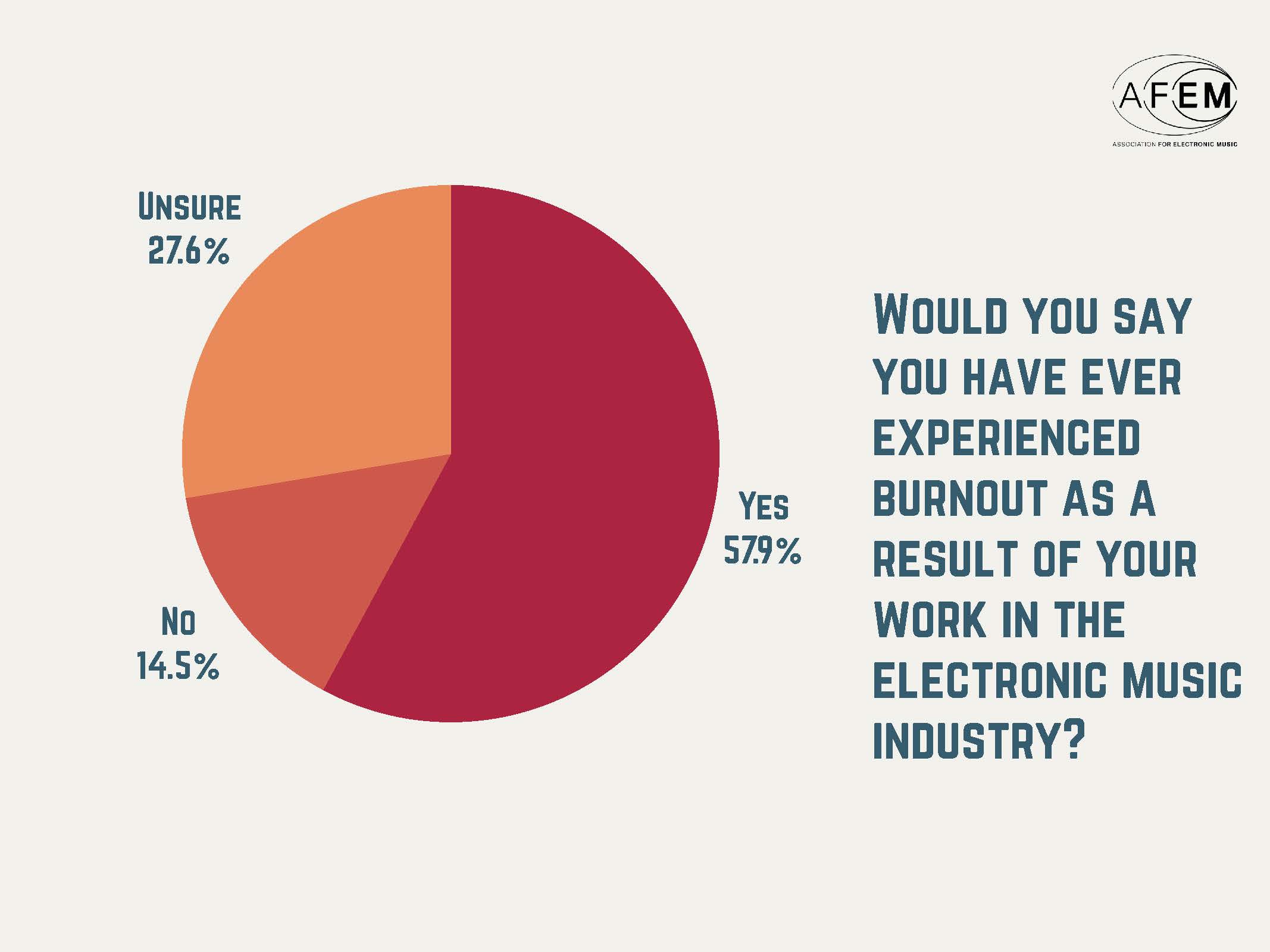Burn-out in the dance-industry
The electronic music industry is known for its dynamic and exciting nature. However, behind the scenes, there is a less discussed downside: burnout. The Association For Electronic Music (AFEM) wanted to gain a better understanding of this issue and, following the public report that emerged from the diversity research at ESNS, approached the Science Shop Language, Culture & Communication. Together with students from the master's program in Arts, Culture & Media, they initiated a study to explore the scope of burnout among professionals in the dance industry.

The Science Shop connected AFEM with the course 'Music Careers, Industries, Lives' from the master's program 'Arts, Culture and Media,' taught by Chris Tonelli. During one of the lectures, AFEM’s COO Finlay Johnson gave a presentation in which he emphasized the need for academic research into burnout in the dance industry. Students Maan Goedhart, Maryna Chernysh, and Claudia Poli, together with AFEM’s Health group, designed a survey based on a literature review and interviews with professionals in the electronic music industry.
The results of this survey provide a clear picture of the burnout problem in the electronic music industry, although it is only the tip of the iceberg. One of the key factors is the number of working hours: more than half of the respondents reported working over 50 hours per week, while 23% even worked between 60 and 70 hours a week! Additionally, the irregularity and unpredictability of the sector play a major role in the development of burnout. Nearly 40% of respondents indicated that they have to travel 40 hours a month for their work. Frequent travel and working nights can disrupt the balance between work and private life.

The study also shows that burnout is widespread in the sector. Almost 60% of participants stated they had experienced burnout, while about one-third were unsure whether they had experienced or were currently experiencing burnout. Many respondents also reported burnout symptoms such as stomach problems, lethargy, lack of focus, and poor sleep.
The students concluded their survey with questions about how work in the dance industry can be improved to reduce the risk of burnout. According to respondents, the biggest gain could be achieved by having regular "check-ins." Other suggested improvements include raising awareness of burnout symptoms and de-normalizing drug and alcohol use.

Respondents also suggested both cultural and systemic improvements. Culturally, for instance, free time and vacations should become more commonplace, and competition within the field should be reduced. Systemically, respondents would like to see higher wages, affordable psychotherapy, support groups, and better guidance from management.
Despite these stress factors, many respondents are generally satisfied with their work. However, many find the workload unreasonable and experience a culture where they are expected to always be available. This feeling of always having to be "on" prevents workers from truly taking time off from their jobs.
The results of this research offer practical recommendations to reduce burnout in the electronic music industry. The next step is to implement these recommendations and create a healthier working environment for all professionals in the sector.
| Last modified: | 12 September 2024 10.17 a.m. |
